1969 Dodge Charger General Lee replica
General Lee, not the soldier, but the star of TV’s The Dukes of Hazzard, made the 1969 Dodge Charger the ultimate American muscle car for generations of car fans the world over
By Ian Parkes, photography High Art Photography

There won’t be many people of a certain age who haven’t seen an episode of The Dukes of Hazzard — in the US its popularity was second only to Dallas — and fans of car stunts will surely have seen quite a few of them.
It’s fair to say that ahead of James Bond’s Aston, Bullitt’s Mustang, and even the talking Pontiac Firebird also featured in these pages, the General Lee is the most famous film and TV car of them all, not least because of repeated exposure over 147 episodes in seven series, two films, and, of course, every episode’s signature stunt — the General Lee hitting a ramp and flying free as a bird, accompanied by triumphant driver Bo Duke’s “Yee-haah!”
For viewers burdened with some mechanical sympathy, it could be a tough watch. Lots of launchings were filmed, but few landings — for obvious reasons. You just knew those cars would not be driving away from that. The jaunty little bounce that the Duke boys laughed off and powered away from was clearly the aftermath of a tamer jump. Meanwhile, what you suspected — that the pancaked stunt car would be towed away to the scrap heap — is what really happened.
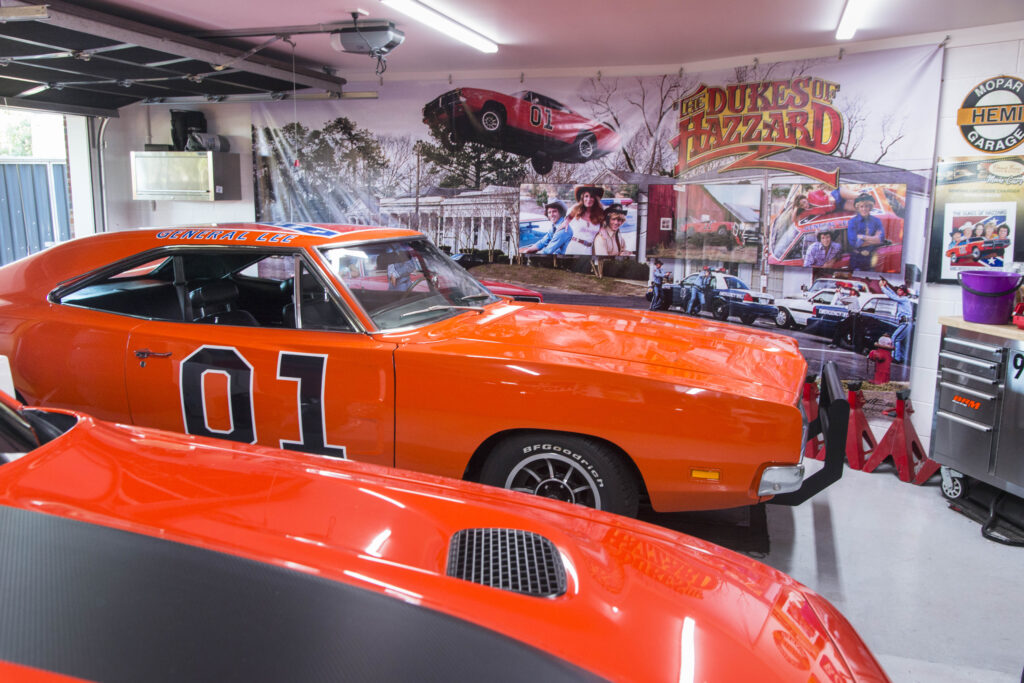
Roll of honour
The show wrecked roughly two Dodge Chargers per episode, more than 300 in total. Such was the rate of destruction, it was hard to keep count. One web source estimates 256 to 321 Dodge Chargers were destroyed over the course of the show’s six-year run that started in 1979. It stated that when production finally ended in 1985, only 17 Chargers remained, in various states of distress.
The first five episodes were filmed in Georgia, where the fictional Hazzard County was located, but production then moved to Los Angeles, where there was also a plentiful supply of tired old Chargers to be found. For seasons two to four, brothers Andre and Renaud Veluzat would scour Los Angeles’ streets, car yards, and classifieds, offering a few hundred bucks cash to student or other down-at-heel Charger owners until they had filled their car transporter, then it was off to their paint shop. It was easy pickings — at least at first.
Available engines included 318, 383, and 440-cubic-inch variations. All of them were fed by a single four-barrel carburettor. Three-speed TorqueFlite autos were standard but a four-speed Hurst manual transmission was available. While the 440ci R/Ts like Bo and Duke’s car now command serious money, it’s likely many of them were just grist to the Hazzard County mill. Thankfully, the production team didn’t use any of the rare 426 Hemi-engined cars. Just over 400 of those were made.

New recruits
Such was the rate of attrition that, in the later series, the team also hunted down 1968 Chargers and modified them to look like ’69s by riveting a divider in the front grille, removing the round telltale indicators in the flanks, and riveting in the different tail lights. In the last couple of seasons, the producers also took to recycling old jump footage and using models for the more elaborate stunts required to keep pace with the new kid on the block, Knight Rider.
By way of comparison, that programme started filming with just four Firebirds, although a job lot was later acquired that almost literally ‘fell off the back of a lorry’. It was actually a train with a consignment of new cars on board that had derailed. GM was considering repairing them but the show producers took them, probably to the satisfaction of all involved.
Back to the General Lee production line: the car wranglers would paint them (actually a Chevrolet shade of) orange and spray the usually black interiors to match the General’s tan interior. This could be done quite roughly — often the instruments were also sprayed over — as the car would get only seconds of screen time before it was sacrificed on the altar of ratings.
While filling dents in the car, the props team also had to fill and smooth the welded join in the C-pillar. As all new Chargers were fitted with vinyl roofs, the join was left unfinished at the factory. They would add the front bull bar, the CB radio aerial, the ‘turbine’ wheels, and the safety gear needed to keep the stunt drivers alive for the next shot. Bags of cement were added to the boot to stop the car from nose diving in the jump, and off they would go.

Handmade
Incredibly, the name, the numbers, and the Confederate flag on the roof were hand painted on each car in the earliest shows. The flag’s white lines were often just medical tape. A sticker in the back window of the car in the first couple of shows was dropped from the spec as it was just too much work to reproduce. It’s surprising to think the use of vinyl decals is really that recent.
As you’d expect, the owner of this car, Aucklander Nick Ray, is a fount of knowledge on General Lee lore, and he doesn’t begrudge the show its wanton ways.
“It was a fantastic show that a lot of people loved — and I wouldn’t have this car now without it,” he says.
Nick also told us that in 2012 golfer Bubba Watson paid US$110,000 for the first General Lee wrecked in the show. It had been found in a junkyard and restored by the president of the General Lee fan club. Yes, the car — not the Confederate army commander — has its own fan club. Then, three years later, Watson said he would replace the Confederate flag painted on its roof with a US flag after a terrorist shot black people in a church in Charleston. The shooter had posed with the flag, sparking a nationwide discussion about its de facto slavery symbolism. However, as no photos ever appeared, it’s not certain Bubba actually changed it.
Nick says that, thankfully, the flag is less contentious here and, while some people might ask about it, as we did, “Most people just appreciate the car for what it is.”
Nick’s flag was also painted on by one of the few remaining old-school sign-writers.
“And it’s not coming off,” he states.
Nick has owned his General Lee for 12 years. When he decided to go American, the 1969 Dodge Charger — the ultimate American muscle car — was the only choice for him.

The only way is Dixie
“I was raised on Dukes of Hazzard. If I was ever going to get anything American it had to be that,” he says.
You can keep your Mustangs and Corvettes, according to Nick. The Charger had a 440 engine, the Coke bottle hipline, the classic deeply recessed grille and blacked-out rear valance, and the tennis court proportions. And who wouldn’t love the fact that Americans considered this a mid-size car?
The outrageousness of it all had an extra appeal to English-born gas fitter Nick who until then had been a Lotus man — those deliberately tiny and light sports cars being almost the polar opposite of the Charger. When Nick’s former wife said he’d have to swap his 1993 Lotus Esprit Turbo for something with four seats, Nick seized the opportunity — although he concedes it probably wasn’t what she had in mind.
Nick’s first purchase was the air horn assembly that plays the first 12 notes of the song ‘Dixie’. Nick’s General Lee build was under way. Apparently the show’s producers had heard a hot rod passing by playing the tune, chased it down, and bought the five-horn assembly for US$300.
Next, Nick started searching American sites and found this car on Ebay in rough condition in its original green but mostly primer paint. The seller had bought it for his son. Some work had been done on the car but it hadn’t been done well. The cops kept stopping the car for issues like blown tail lights. Dad had said if it happened again, he would sell the car. It happened again.

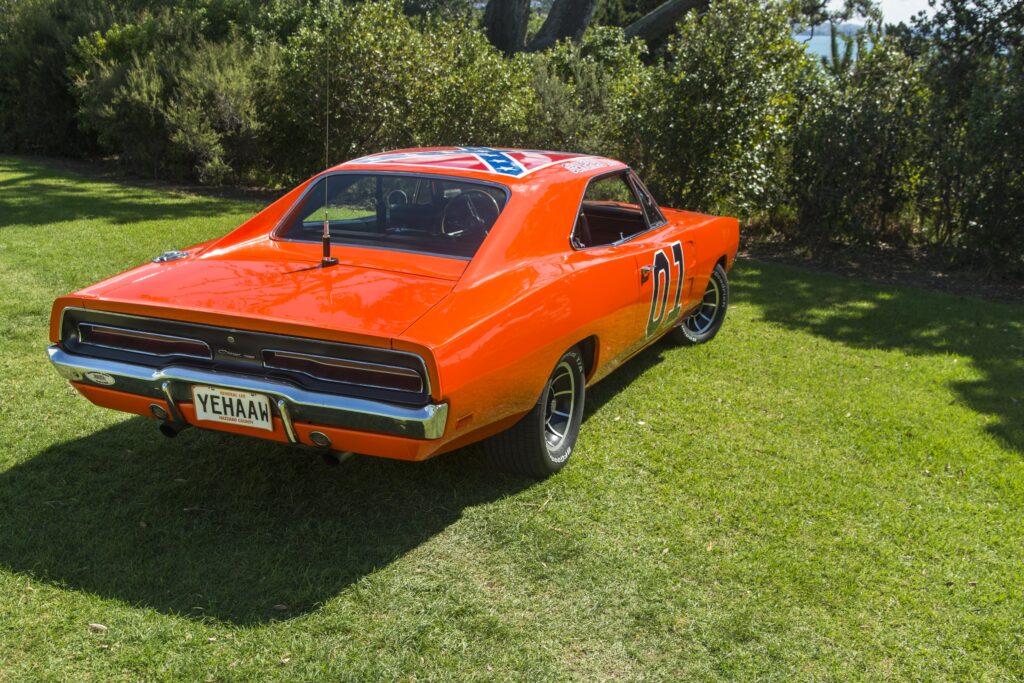
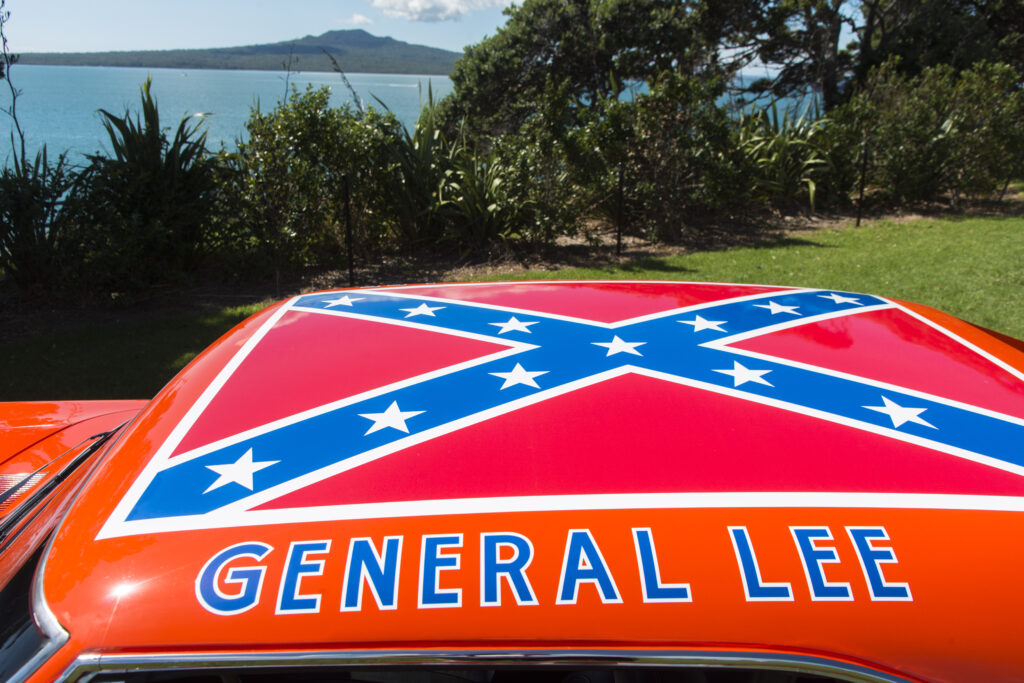

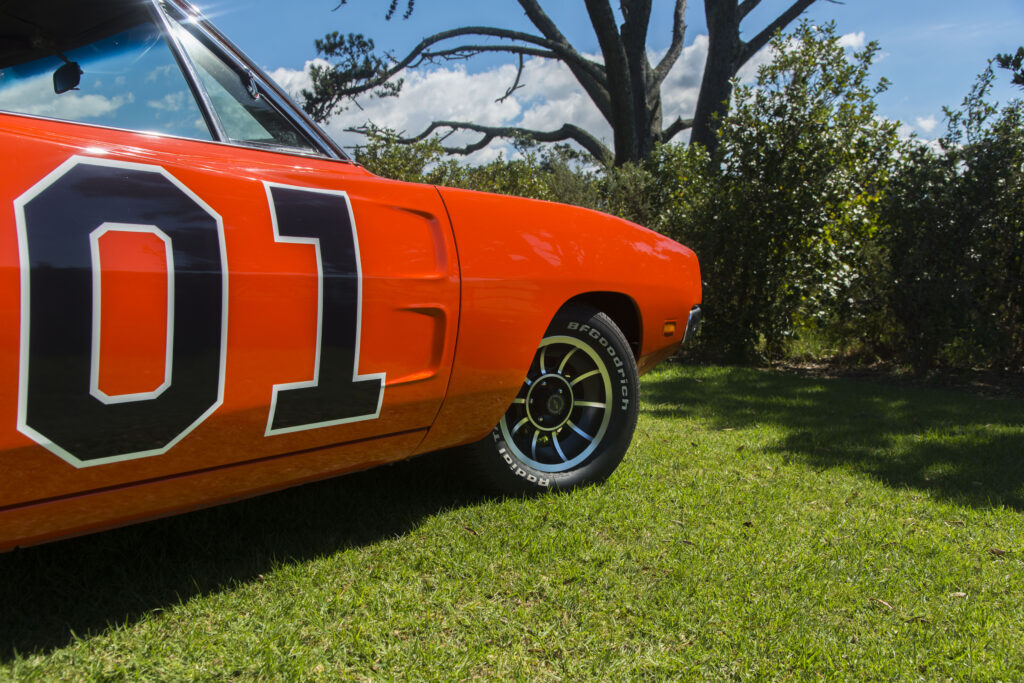
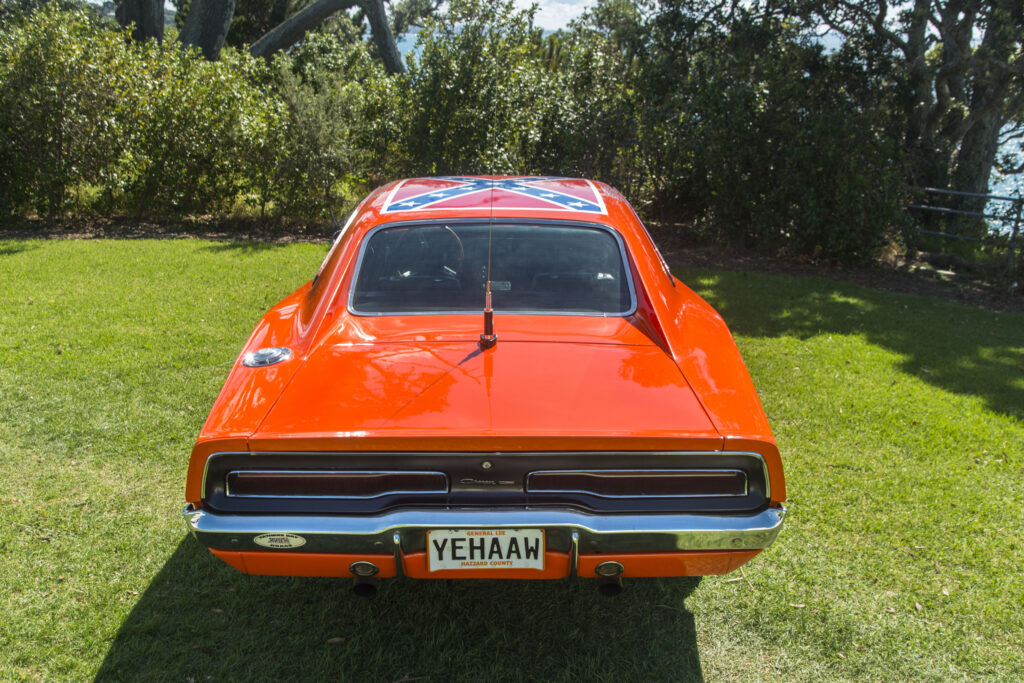
Risky business
Nick got in touch with the owner and asked for more photos. He received hundreds, which showed it was rough, but genuine. Nick told the owner he could only afford US$15,000, and asked if he would accept that. The owner said he’d have to check with his wife but then Nick didn’t hear back for days. Then the owner called back and accepted the deal. Relieved, Nick fired off the money — but the auction kept running. He tried to contact the owner, without success. It dawned on Nick he’d been far too trusting. The owner was going to sell it again and keep both sums.
With the clock running down on the auction, the price quickly climbed to US$28,000. Nick was convinced he was watching his dream car, and his savings, disappearing into the sunset. Then, at the last minute, the owner cancelled the auction. The owner called Nick but instead of trying to squeeze more cash out of him, he said he had just wanted to see where it would get to, and that a deal was a deal. The car was Nick’s for the agreed $15,000.
“I was getting a bit worried but he came through,” says a still grateful Nick.
Not only that, but when Nick said he’d have to ship the car from where it was in Palm Springs, Florida, to the shipper in Carson City, Nevada, the owner said he had relatives he’d been meaning to visit out west so he would drive the 1100 kilometres — and he paid for his own fuel and accommodation on the way.
“When it arrived it was stuffed full of spare parts, including new doors,” says Nick. “I still have heaps of stuff I haven’t used.
“What a cool guy to let me have it for that amount of money when there was more on the table. It’s great to know there are still people out there like that. That’s the way I work, too. I do deals on a handshake and that’s good enough for me.
“I kept in touch with him and sent him pics of the rebuild, so he saw it all the way through.”
It was both Nick and the seller’s first foray on Craigslist. Sadly, a computer hard-drive crash meant Nick lost the previous owner’s contact details.
“At least he saw the completed car,” says Nick. “I’m happy about that.”
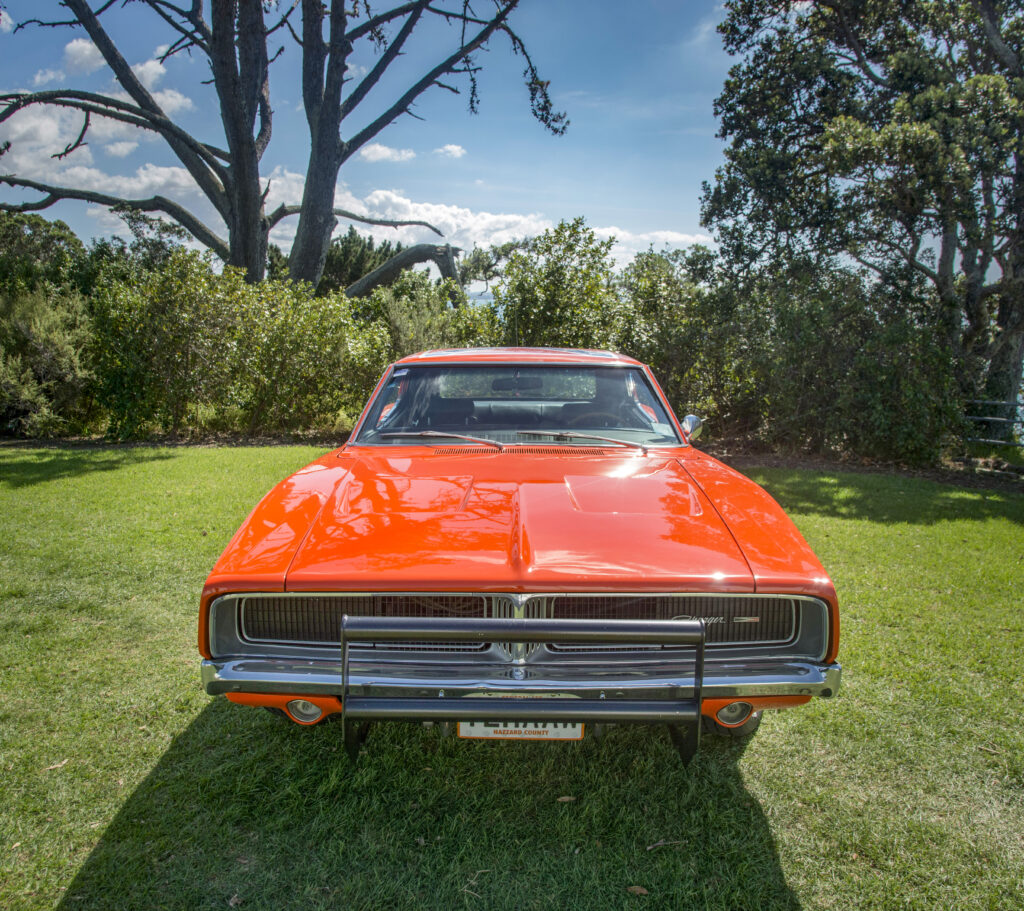
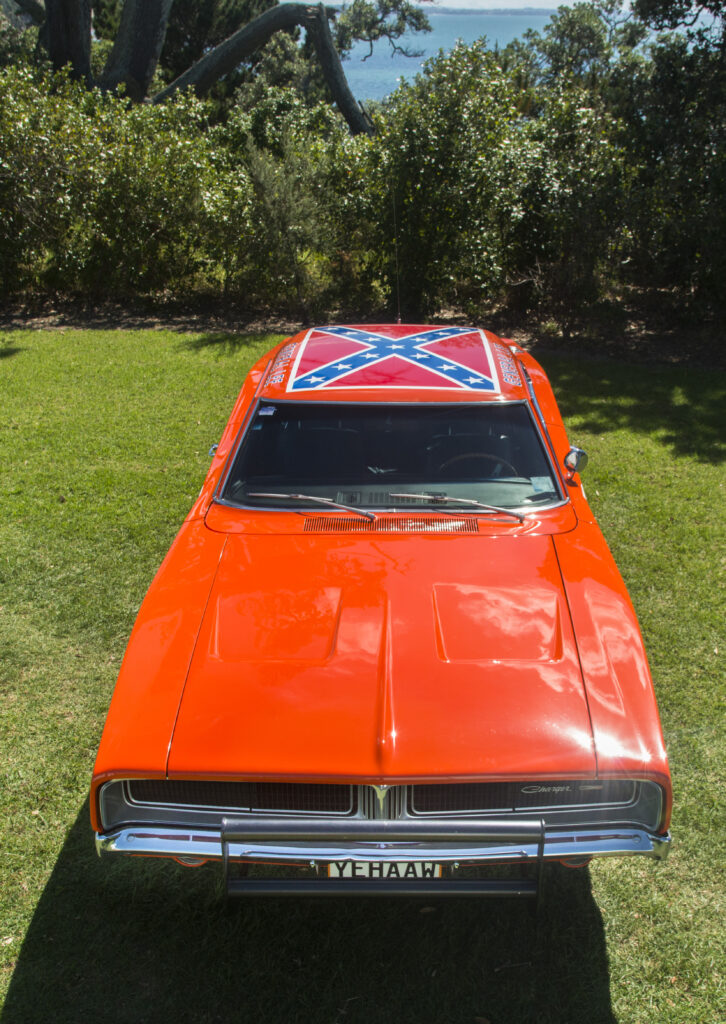
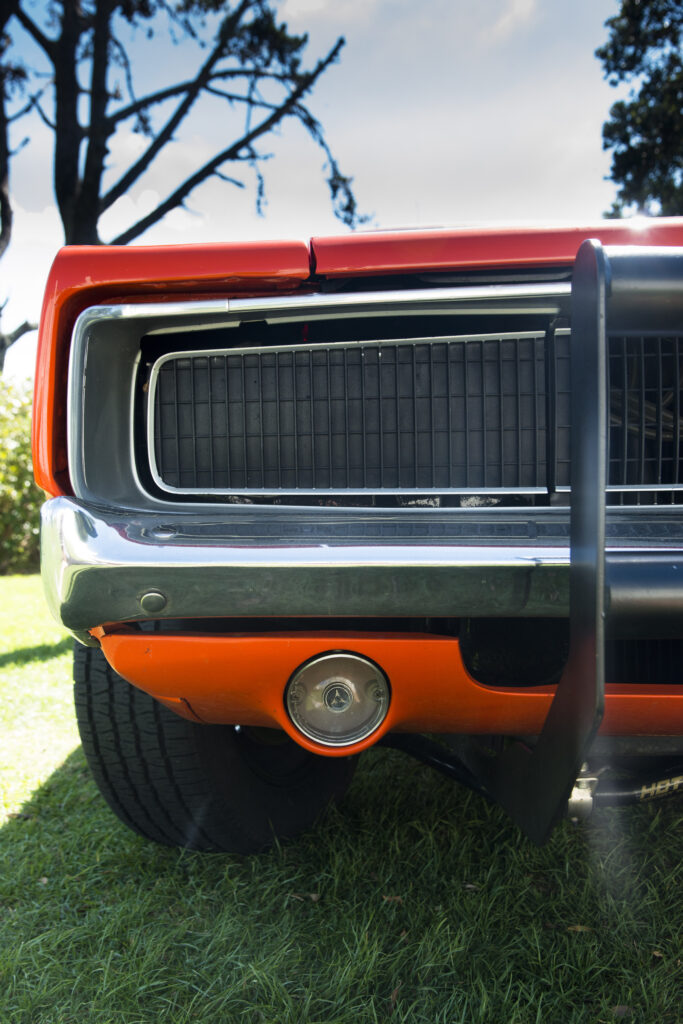

More than skin deep
Since then the car has been through a nuts and bolts rebuild. The body was going to be sandblasted but Covid shut the workshop so the panel beater, Kirk Benge, offered to strip it himself using a chemical stripper. Nick says the body had vast amounts of bog on its flanks but when they scraped it off the metal was clear and straight. Nick thinks whoever had done it just wanted to accentuate the lines. Much to their surprise, they found just one 50-cent-sized rust hole, in the usual spot in the rear mudguard, and bodgy filler jobs covering the usual parking dents in each corner.
Apart from the paint and the engine, Nick has done most of the rest of the work himself.
He entrusted the 383ci engine to a well-known engine rebuilder, but it didn’t go well. The engine disintegrated and all he could salvage was the intake manifold and the crank.
Nick then bought a 440ci block locally and gave this one to Dave Moyle who stroked it to just over 500ci. He completed the build to Nick’s satisfaction with Edelbrock heads and manifolds breathing through a four-barrel 850 carb, TGI headers, and a 3-inch exhaust. MSD ignition sends the sparks and a Serpentine belt kit keeps everything in time.

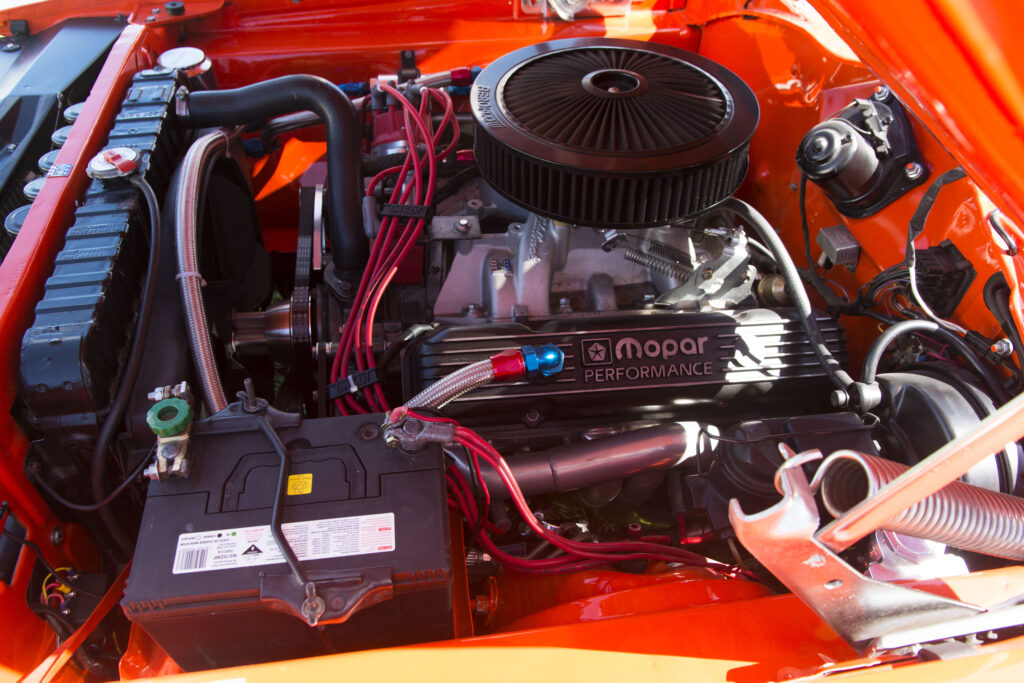
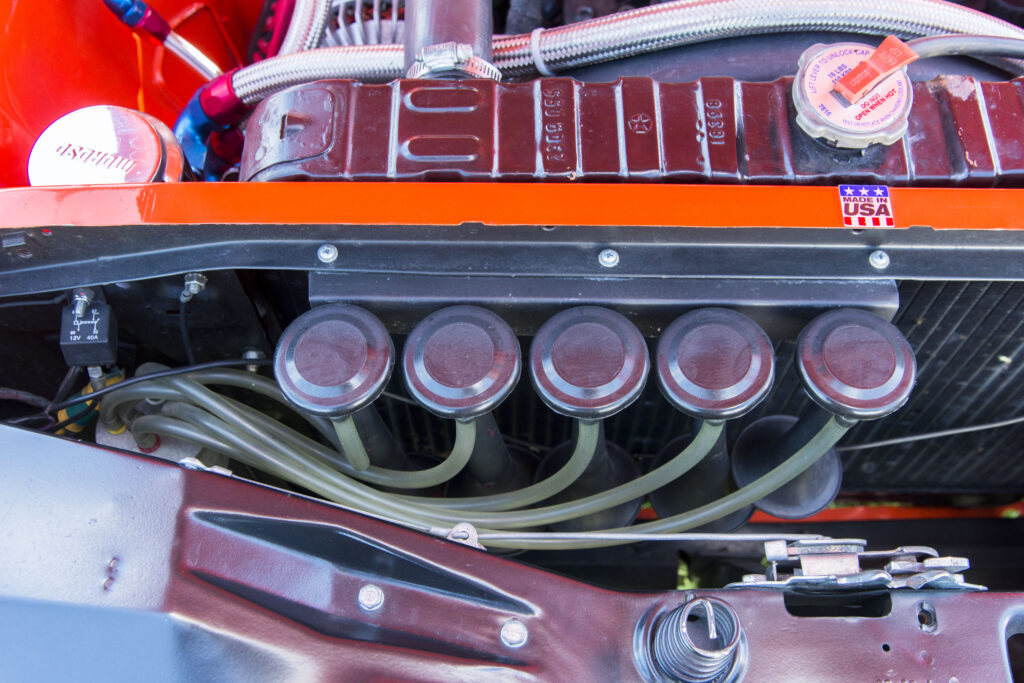
Engine options
As well as more powerful engines, the R/T models had upgraded suspensions, performance tyres, and better brakes, as well as sportier trim and racing stripes. The 1969 Charger R/Ts came standard with the 7.2-litre 440 Magnum engine, with the Nascar inspired 426 Hemi as an option.
The high-performance version of the 440 Magnum with the four-barrel carburettor produced 375 brake horsepower (280 kilowatts).
The most powerful 440 engine (390 horsepower) had three two-barrel carburettors and higher compression. It was designated the 440 Six Pack but it wasn’t available in the 1969 Charger.
Rarest and most powerful was the 426 Hemi which had two Carter four-barrel carburettors. It produced 490bhp at 4000 revs and 425lb/ft of torque at 5000rpm. Only 432 Hemi Chargers were ever delivered.
The Charger R/T models first appeared in 1968 when Dodge needed a new entry in the muscle car stakes. The new Charger was based on the ’66 Dodge Coronet body. It got new bonnet and boot lines, subtle scallops were added to the doors hinting at racing air scoops (the Coronet R/T had big blister scoops), and the Coke bottle profile lines were accentuated, flowing into an intersection in the doors. A new American classic was born.
The 1969 version refined the vision and it became the golden year for the Chargers; the Charger 500 and the legendary Charger Daytona with its radical aero nose ensured Chargers dominated Nascar that year, as well as the street and the strip.
Also new for ’69, a new Special Edition SE trim option offered leather front seats and wood grain on the dash, centre console, and steering wheel.

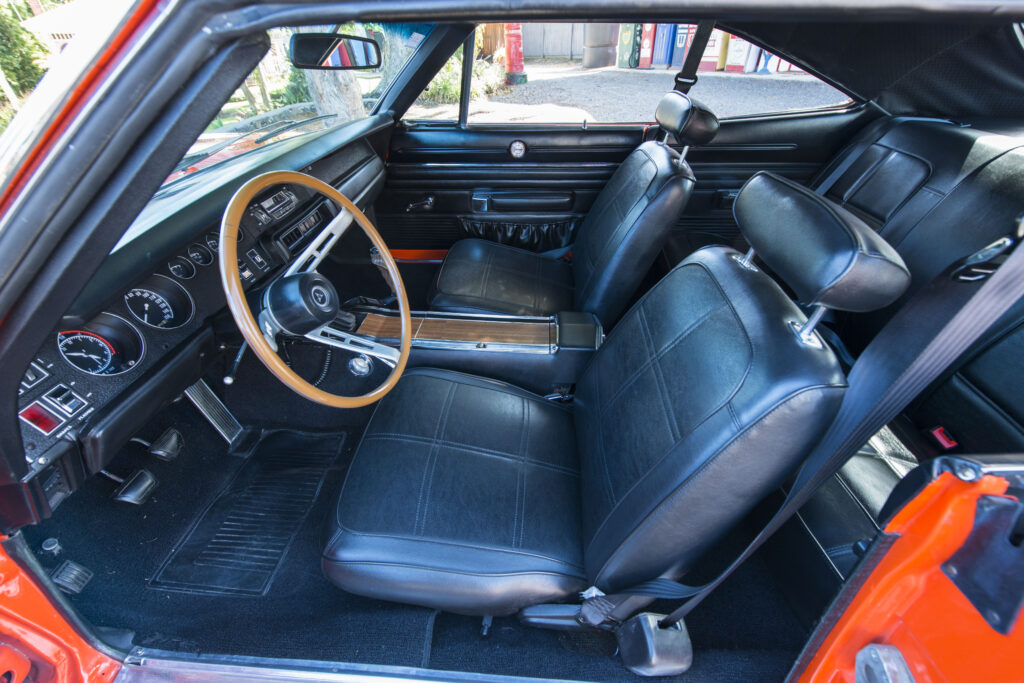
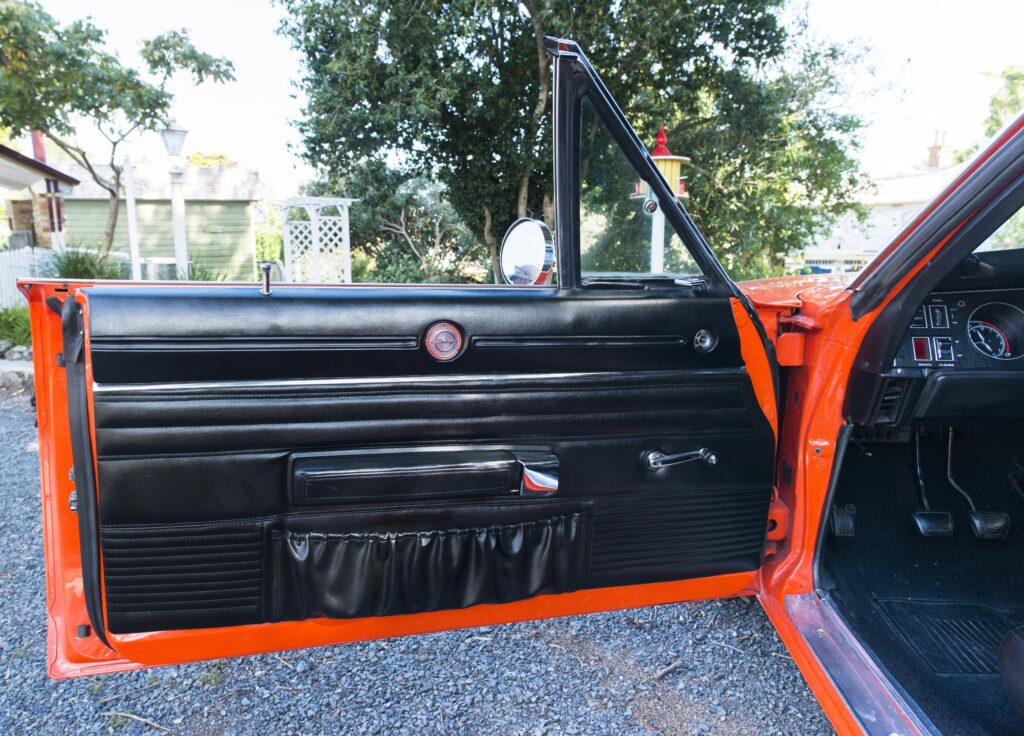
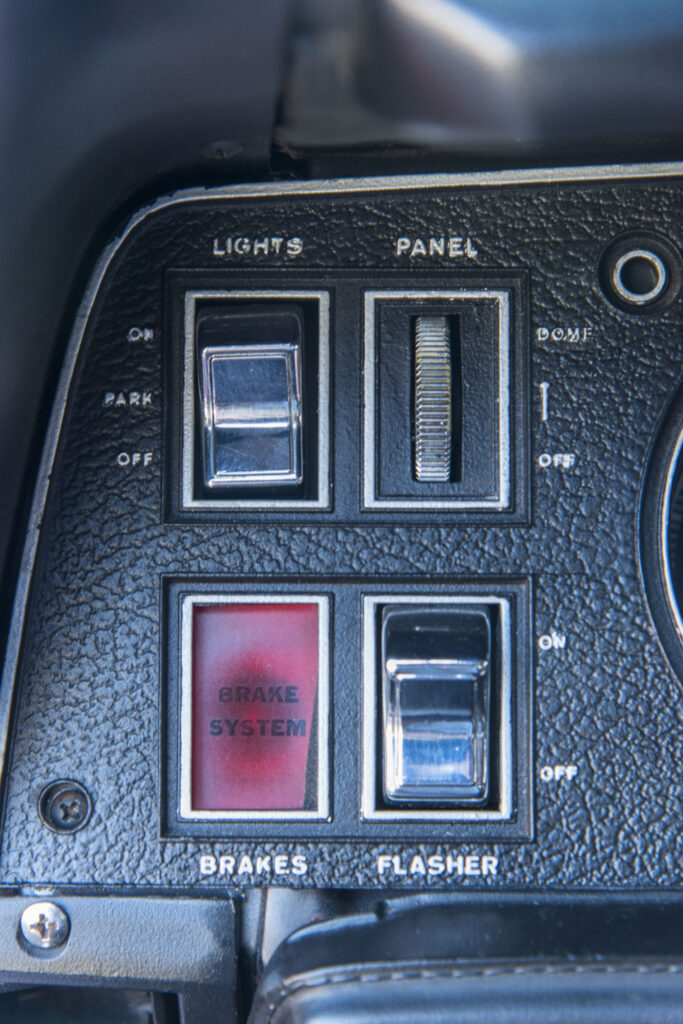
Kit inspection
As far as adherence to the General Lee formula goes, Nick notes a few exceptions. The doors aren’t welded shut as they were on the Duke boy’s car and it doesn’t have a roll cage but, as the original aim was to have a four-seater, a cage was out from the start.
Nick doesn’t like the tan interior, so that was out too. It’s also a manual, with the original pistol grip gear lever, while the show cars were apparently all autos. Nick says it is also missing a couple of Chrysler badges behind the front wheel arches but they often didn’t make it back onto these cars after a repaint. “And it doesn’t need any more holes in it.”
The bull bar was made in New Lynn, Auckland, just working from photos to get the dimensions right. The CB radio is not connected to the aerial but who would Nick call these days?
It was already wearing disc brakes at the front; they were a factory option. Nick has also upgraded the suspension. He has fitted a front anti-roll bar and adjustable shocks.
“It actually handles reasonably well, considering it’s still a barge,” he says.
The rear bumper also sports an American Muscle Car Club sticker advertising the club’s Father’s Day Drags which Nick is involved with through the club. He hasn’t run the General Lee down the drag strip yet, although he has another Mopar car at home, a 2016 Dodge Challenger Hellcat which clocked a 12-second quarter mile on his first run.
A blast down the motorway to a new photo location with the windows down — there’s no air con in the car, or even a heater — confirms the Charger is as raw, loud, and squash-into-the-seatback powerful as you’d expect a top flight 8-litre-plus muscle car to be, driving in a straight line.
It’s just as well Nick treats corners conservatively as Dodge hadn’t yet got the hang of bucket seat design. It felt like I was sitting on a round-shouldered cushion, rather than in a seat.
Nick has an anti-roll bar for the rear but he suspects that might make it a little too stiff for general use on the road. The majority of the build was completed in six months, meaning what looks like a brand new replica is in fact 11-and-a-half years old. Nick has done about 10,000 miles in it since the build.
Just five per cent of the 69,000 original ‘69 Vintage Dodge Chargers are still running today, so prices for them are naturally pretty high.
Actor John Schneider, who played Bo Duke, has apparently turned 20 or more of them into General Lees himself. He ran one for many years and sold it at auction in 2008 as Bo’s General Lee, for $US230,000. That probably encouraged him to make a few more. At least one of the replica cars is reputed to have fetched a top bid of $450,000. Perhaps it had TV show or film provenance. The original list price for a Charger R/T was $3575 but you could option them up close to $5000.
Given the popularity of the show, and the simplicity of the conversion, there are quite a few General Lees out there. Nick reckons there are at least three or four of them in New Zealand, built to varying standards. I haven’t inspected the other local cars, but having seen this one up close, it surely leaps clear of the pack.


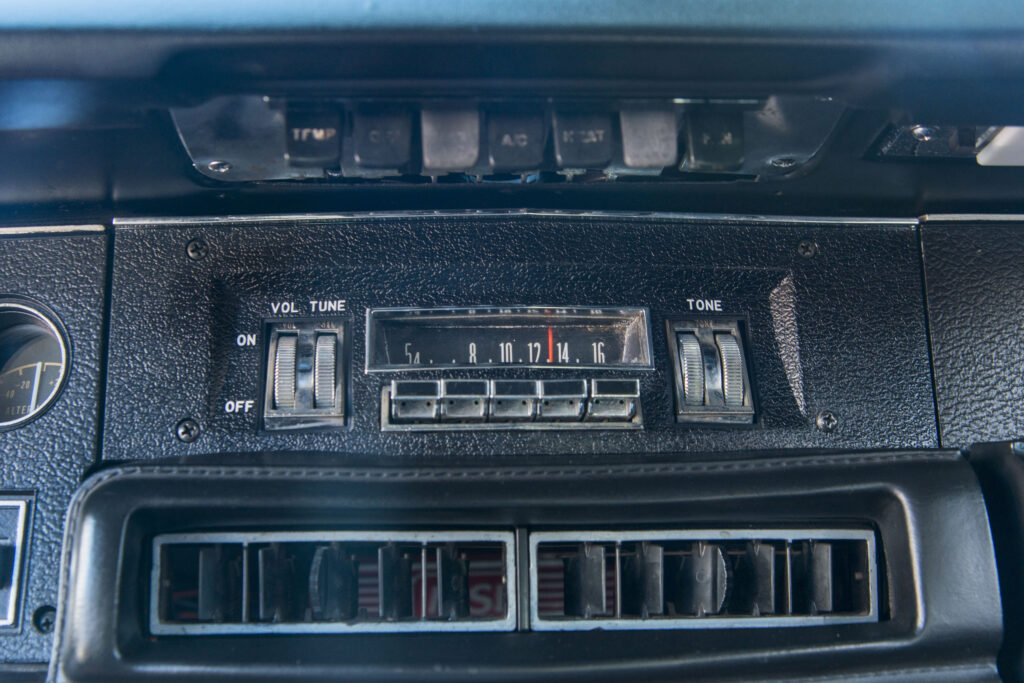
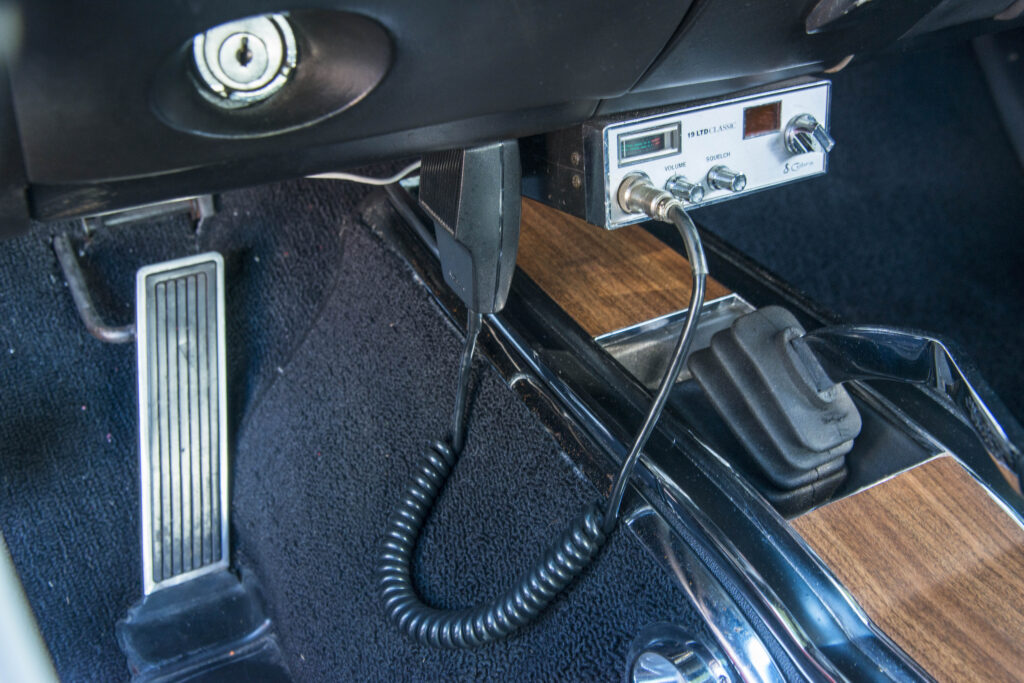
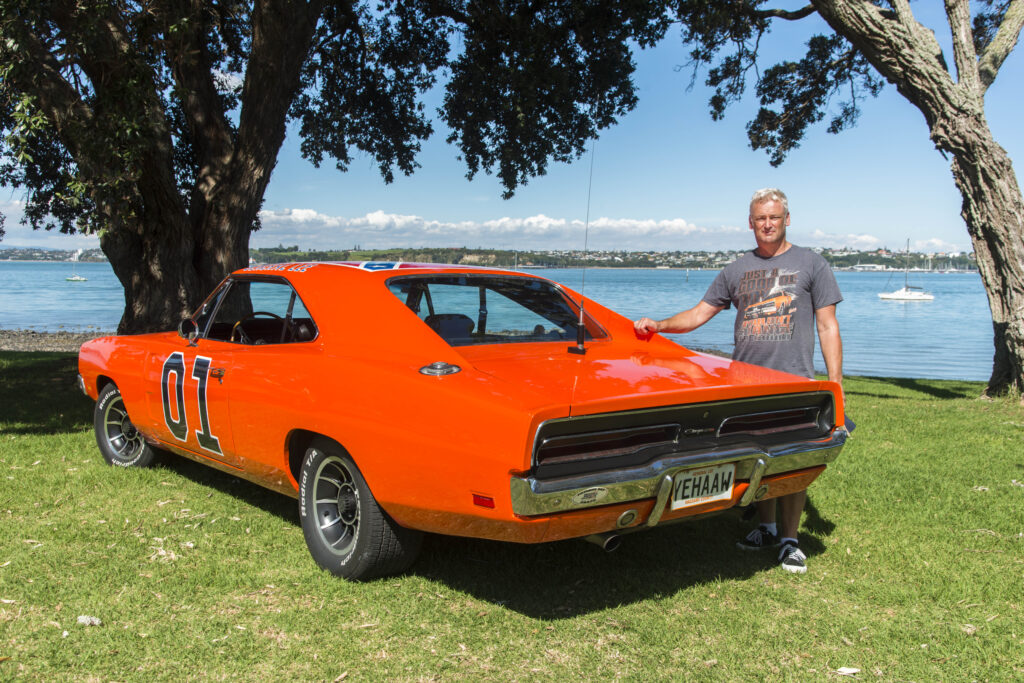
Gas cranking station
We took Nick’s car to Ryders in Avondale, Auckland, to provide an atmospheric backdrop from the heyday of petrol-driven cars.
The building with a multitude of pumps outside is stuffed full of service station memorabilia like petrol and oil cans, tanks, pourers and period signage, as well as a Model T tow wagon. It would be heaven for a certain brand of TV pickers.
Tucked out of sight down a right of way, it is surrounded by several other historic kauri buildings brought onto the nearly-one-hectare site, including the former Kelvin Hotel from Auckland’s Hobson St, which was favoured by visiting celebrities.
Other buildings house a cinema and restaurant that made Ryders very popular with car clubs and other groups until Covid closed the doors in March 2021. Owner Clint Ryder is keen to get the business back on its feet, taking group bookings only, but as older people are generally more Covid cautious, the re-opening this year has so far stuttered at best.
Clint’s grandfather, Jack Ryder, was an avid collector of motor sport and sports in general memorabilia. Wandering round you are constantly surprised with treasures like the racing suit Stirling Moss wore, authenticated by the man himself, when he won his first Grand Prix at Aintree in 1955, beating Fangio.
There’s also world champion speedway stars Ivan Mauger and Ole Olsen’s racing leathers, not to mention autographed pictures of Jack with Mohammed Ali, Joe Frazier, and the like — and a cricket bat and cap presented to Jack by Don Bradman himself.
For your next club outing or film show with a meal, contact Clint Ryder on 021 505 869, or email [email protected].



